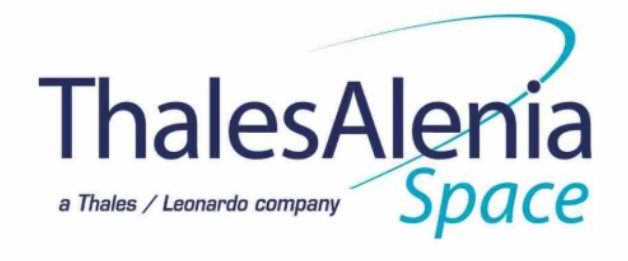
-
StatusCompleted
-
Status date2014-12-09
The SAET project has the main objective to define engineered satellite-based network architecture for the provision of multimedia services on-board European trains. Market items and Railway Operators exigencies have been taken into account during all the project phases.
SAET takes advantage from the experience of the heritage of other European initiatives, and in particular of the EC-co-funded FIFTH project, where several technical items strictly related to telecommunications in a railway environment have been studied. Technically, SAET aims at designing and implementing an engineered train terminal prototype tailored to the European high speed train technology, for which a new generation flat array antenna has been architecturally studied and at the definition and assessment of suitable system architecture, validated through a test campaign. In SAET, much attention has been paid to the regulatory aspects characterising the railway context, designing an engineered solution respecting these regulations. Finally, SAET starts new technical solutions taking into account the current trends on the train technologies and new service classes suitable for the new TELCO user represented by train passengers.
In the following pictures details on the final SAET terminal installed on the Italian ETR500 Train is reported with the AAS-I Technical Working Team.
SAET Antenna click for larger image |
Radome on the ETR500 roof click for l |
The key issues to be addressed during the project phases are:
- For phase 1, the definition of a Business Model for satellite telecommunications applied to the railway environment, and of a consistent set of requirements followed by a suitable System Architecture.
- For phase 2, the design and development of the Railway Satellite Engineered TLC System and the organisation and execution of suitable and significant verification and test campaign. During this project phase a new generation flat array antenna will be studied, designed and developed.
- For the third - and optional - phase, the completion of the flat array antenna development.
The SAET target system represents an important opportunity for the deployment of a competitive satellite/terrestrial system which addresses the railway scenario and related market segments. The provision of multimedia services on-board trains presents very interesting perspectives:
- For railways operators: to become more competitive with other transportation alternatives (planes, ships, etc) and to attract more passengers,
- For satellite operators: to expand their market including new segments.
Alcatel Alenia Space - Italia (AAS-I) takes advantage, for the development of the SAET system, from its large experience in the field of satellite telecommunications for railway environment, in particular with the EC-co-funded projects SUITED and FIFTH.
This experience highlights the effort spent by AAS-I in the past years to specify and develop an integrated satellite/terrestrial system for the provision of Internet services in railway environment, and points out the strong, well-targeted and well-organised structure of the work already performed and the strategic view of the work to be performed in the next years.
Moreover, the strong partnership of AAS-I with the major European railway operators such as Trenitalia (Italy) and SNCF (France) (often participating in the projects leaded by AAS-I) witnesses a remarkable impact at industrial level associated with the activity of AAS-I in the field of railway telecommunication systems development.
SAET railway TLC system is devised with the objective of providing passengers of high-speed trains with two main typologies of service:
- Internet,
- Broadcast digital TV.
The network infrastructure shall consist of an access portion and a fixed terrestrial portion, as shown in the following figure.
The access portion is based on a satellite system. This system is characterised by a geostationary satellite operating at Ku band and providing the support for broadband communications. Transparent payloads, available in commercial satellites, have been considered for the architecture baseline. In the areas where the satellite radio channel is unavailable due to fading effects, the satellite system will be integrated with suitable gap filler systems in charge of extending the satellite connectivity.
The fixed terrestrial portion is composed by a federation of service and content providers:
- The railway operator will act as a service provider by directly providing multimedia services to passengers,
- Third-party service and content providers will provide additional multimedia services
- TV broadcasters.
A satellite positioning system will be included in the system to provide the positioning information necessary (i) for location-based services, (ii) for the pointing, acquisition and tracking (PAT) algorithm of the train mobile satellite terminal antenna, (iii) to assist mobility procedures. Either EGNOS/Galileo or GPS may be used as satellite positioning system.
By means of the above listed access network systems (outdoor links) a train can connect the fixed terrestrial portion. Towards this end, an in-train sub-system will be installed in each train. The characteristics of the access n
The Project foresees two main Phases:
Phase 1 - During this phase the definition of a suitable Business Model and the definition of the System Requirements and Architecture will be performed.
Phase 2 - In this framework the design, the implementation and the test campaign execution of the end-to-end SAET Network is foreseen. More attention is devoted to define and implement on an actual high sped train the engineered satellite terminal prototype. Also a suitable terminal prototype for the French TGV train is designed and implemented, for the execution in dedicate test campaign on the Rail French Network with SNCF. The design and the proof-of-concept implementation of a flat array based system suitable for the rail environment will complete the activity on mid of 2006.
| The SAET Project activities have been finalised completing the test campaign with Trenitalia, using the satellite terminal installed on a commercial ETR500 Train. About 14000 kilometres have been covered on the Italian High Speed Line between Rome and Naples, and between Milan and Turin. |  click for larger image |
The test activities on the road have been started with the cooperation of the passengers that used the satellite access link during the trip scoring the quality satisfaction. On the physical side more performance data on the link efficiency have been acquired, measuring the quality to respect the impact of the railway environment (more galleries are present on the target railway line covering the 20% on the total path) on the link.
The final results are more satisfactory and this is confirmed by the Railway Operator Trenitalia, Partner in the Project that confirms the passengers' interest for the utilization of services provided by SAET system. Internet access on High Speed Trains is a need especially for the business class clients. In fact, they are willing to pay for benefiting by the services increasing the quality of service during the trip.





